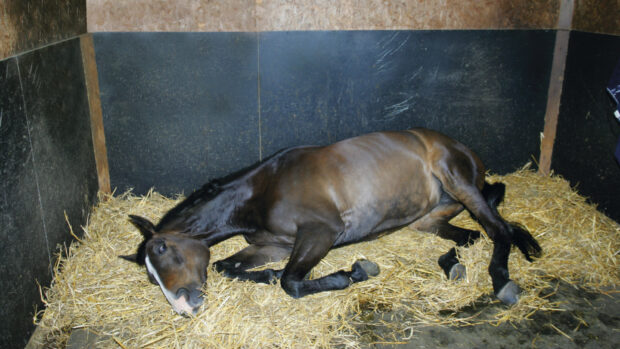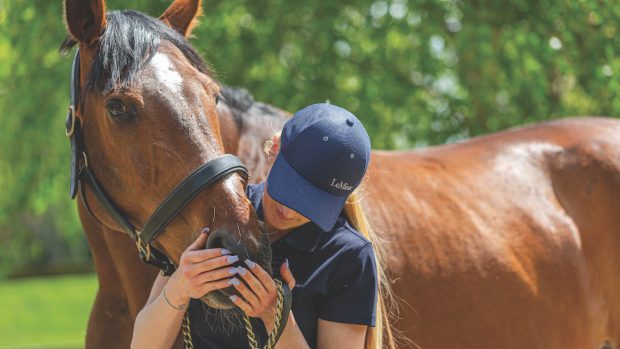Colic in horses is a serious matter than can quickly escalate into an emergency, so if a horse exhibits anything more than mild abdominal discomfort for a few minutes, a vet should be consulted. Even if the horse makes a rapid improvement, veterinary advice may help to avoid future recurrences.
Immediate action in cases of colic
Stay calm and keep spectators away
Remove all hay, especially haynets, and also feed buckets, but allow access to water
If the signs are mild, keep the horse in a stable and ensure there is plenty of bedding
If the horse is lying down quietly, do not force it to get up; it will be in the position it finds most comfortable. Remove buckets and any fixtures and fittings that could cause injury if the horse starts rolling
A few minutes of quiet walking may distract the horse and stop it rolling, especially if you walk it on concrete, where it is less likely to go down. Gentle exercise encourages normal gut motility. Do not walk the horse to the point of exhaustion — 1hr should be more than enough.
When the horse is rolling violently and continually in a stable, it is likely to become cast. In these cases, it is often safer to move it to a field or riding arena. Take care to keep the horse well away from hazards such as ditches and fences. Ensure it cannot become tangled in its rugs, so if necessary remove them.
Do not
- Offer any food
- Administer any kind of colic drench; these old-fashioned remedies are unlikely to do any good and may accidentally enter the lungs, with serious consequences
- Risk injury to yourself or other people in your attempts to help the horse
Colic is something that requires a vet unless the horse rapidly improves. The sooner effective treatment starts, the better the chance of recovery.
- This information formed part of a feature on emergency care first published in Horse & Hound (19 January, 06)



